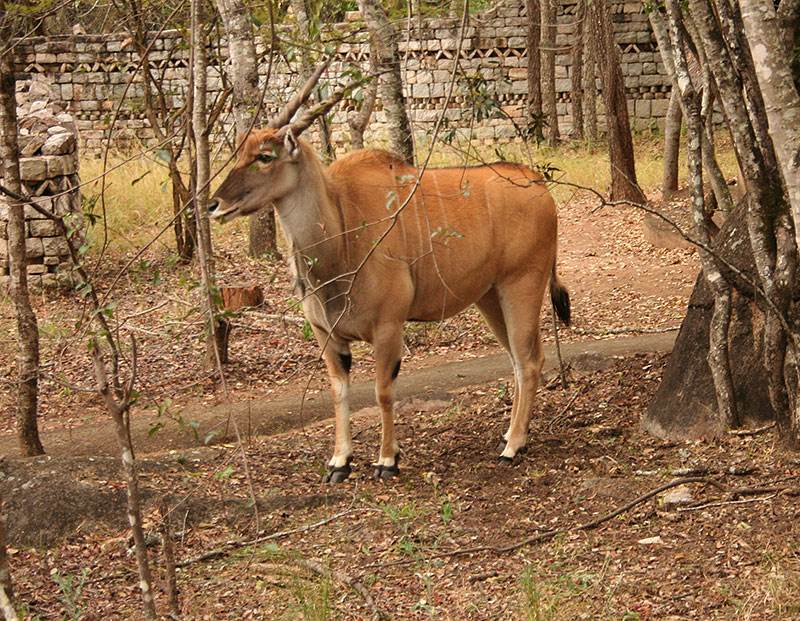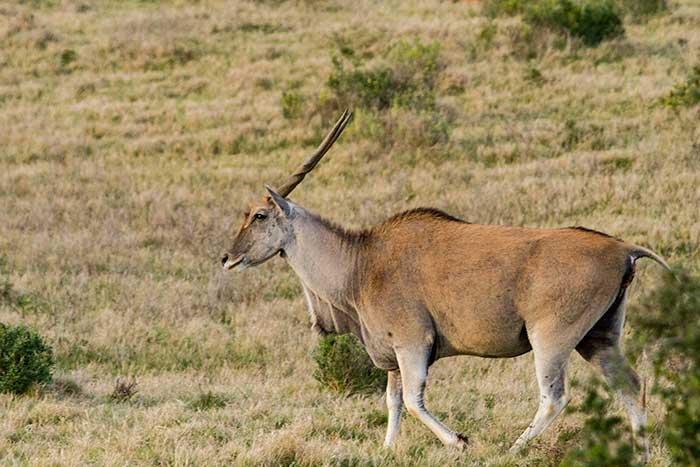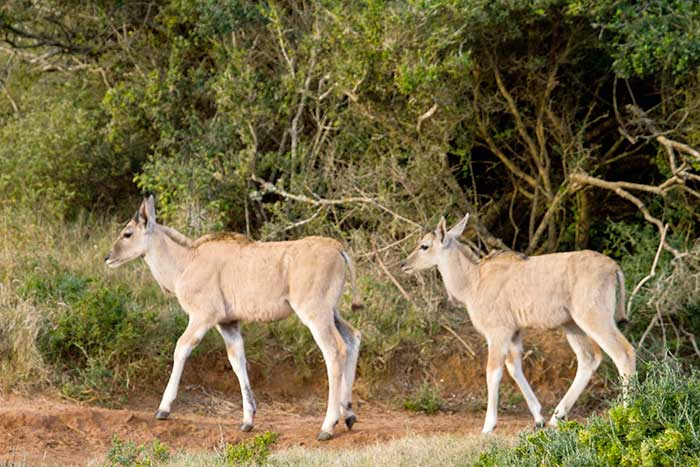Eland - taurotragus oryx

Eland (taurotragu oryx) is a big antelope native to Zambia, South Africa, Namibia, Zimbabwe as well as Botswana.
In bushmen paintings eland are the one animal often depicted. Both sexes have horns making it difficult to determine the difference between the sexes.

On safari look for these beautiful animals in woodland, grassland or savanna areas.
Despite their bulky size, eland have been known to jump 2 metres with ease.


Description
The largest of the antelope, eland can weigh up to 680 kg and stand 178 cm at the shoulder.
Eland are graceful animals, with a large pendulous dewlap and pale fawn colour.
Despite its massive size, eland are excellent jumpers and can easily clear two meters.
Both sexes have horns which curve in a short outward an upward twist.
These horns are used to knock down foliage and although mainly browsers they do occasionally eat grass. Eland can be found in semi desert, miombo woodlands, grasslands, and acacia savannah
Characteristics
Eland have a distinctive clicking noise when they move which is believed to be caused by the 2 halves of each hoof striking together.
This antelope has been domesticated in many areas with partial success, providing rich and nutritious milk and leather.
They live in large mixed groups, usually containing 25–70 individuals.
Elands are the slowest antelope but can maintain a 20 kilometers per hour trot indefinitely.
A dominant bull will bellow advertising his status, with the cow barking when disturbed. Bulls will fight over females, clashing and locking horns them pushing against each other.
Although mainly browsers eland will sometimes eat grass. Of importance is the fact that they can survive without drinking.
Among their predators are wild dogs, lion, hyena and cheetahs.
Breaking down their name tauros is Greek for a bull and trago referring to a male goat. This alludes to the tuft of hair in the ear which resembles a goat’s beard. An oryx meaning pickaxe. Eland comes from the Dutch for moose.
